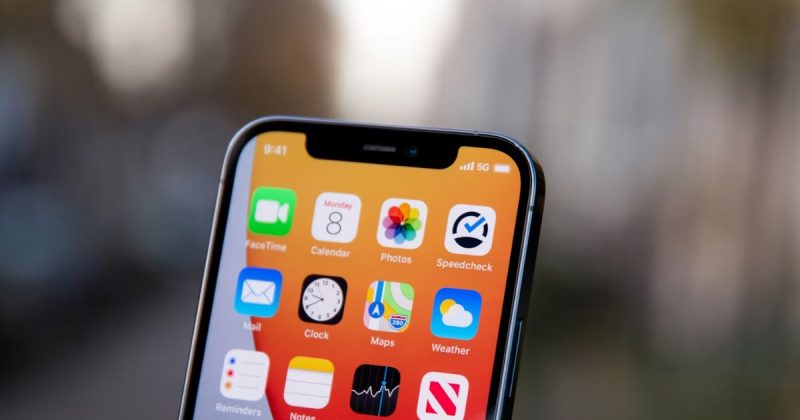Mobile technology is advancing at lightning speed, and the rise of revolutionary 5G smartphones is changing everything—from how we stream content to how our devices interact within smart ecosystems. But it’s not just about faster downloads. 5G marks a game-changing shift in connectivity, enabling smartphones to operate with unprecedented efficiency and intelligence. And this is just the beginning. As networks expand and tech evolves, next-gen smartphones are tapping into ultra-fast 5G to deliver features that once felt like sci-fi. In this article, we’ll explore how 5G is transforming the smartphone experience—and what’s coming next. From blistering speeds to breakthrough applications, today’s devices are built to thrive in a 5 G-powered world.
What is 5G and Why Should You Care
Before diving into how smartphones are leveraging 5G, it’s essential to understand what 5G is and why it matters. 5G is the fifth generation of mobile networks, succeeding the 4G LTE networks that have been in place since 2009. What sets 5G apart from its predecessors is its potential to deliver ultra-fast speeds, low latency, and high-capacity connectivity.
Key Features of 5G:
- Higher Speeds: 5G can deliver download speeds up to 10 gigabits per second (Gbps), which is significantly faster than 4 G’s maximum of around 1 Gbps. This means that 5G is capable of downloading high-definition movies in seconds, streaming 4K or 8K videos without buffering, and facilitating faster game downloads and updates.
- Low Latency: One of the most exciting aspects of 5G is its extremely low latency, typically under 1 millisecond. This minimal delay between sending and receiving data enables near-instantaneous communication, which is critical for real-time applications like gaming, augmented reality (AR), virtual reality (VR), and autonomous vehicles.
- Increased Network Capacity: 5G boosts network capacity, allowing far more devices to connect within the same area compared to 4 G. This makes a big difference in crowded cities, where too many users can clog the network and slow things down.
Revolutionary 5G Smartphone Features: Speed, Gaming & IoT
1. The Role of Smartphones in 5G Adoption
Smartphones are one of the primary ways consumers experience 5G, and manufacturers have been quick to design and release 5 G-capable devices to take full advantage of the new network’s capabilities. However, simply being “5 G-ready” isn’t enough. The latest smartphones go beyond basic 5G support to harness the full potential of the network.
- 5 G-Capable Chipsets: Modern smartphones feature cutting-edge chipsets designed specifically for 5 G. Qualcomm’s Snapdragon 888 and 8 Gen 1 processors, Apple’s A15 Bionic chip, and Samsung’s Exynos 2200 are some examples of powerful chipsets that enable high-speed 5G connectivity. These chips not only provide faster download and upload speeds but also incorporate AI capabilities to optimise network performance in real time.
- Multiple 5G Bands Support: To get the most out of 5G networks, smartphones need to support multiple frequency bands. This is particularly important because 5G networks are deployed across a mix of low, mid, and high-frequency bands, each offering different performance characteristics. Low-band 5G provides broader coverage, while mid-band offers a balance of speed and coverage, and high-band (also known as millimetre-wave) delivers extremely fast speeds but over shorter distances. High-end smartphones now come with support for all of these bands, allowing users to experience 5G performance in a variety of environments.
2. How Smartphones Leverage 5G for Faster Streaming and Downloads
One of the most immediate benefits of 5G for smartphone users is the boost it gives to streaming and downloading activities. Whether you’re streaming your favourite TV show, downloading a large file, or playing a high-definition video game, the increased speed and reduced latency of 5G networks allow smartphones to deliver a superior experience.
- Faster Streaming and Downloading: With 5G speeds, users can stream ultra-high-definition (4K and even 8K) videos without any buffering, even in crowded public spaces. This is a game-changer for consumers who rely on streaming services like Netflix, YouTube, or Apple TV+. The ability to download large movies, games, and apps in seconds instead of minutes or hours also makes a huge difference in the user experience. For content creators, 5G means quicker upload speeds, making it easier to share high-quality photos, videos, and livestreams from their smartphones. For gamers, 5G enables quicker game downloads and smoother online multiplayer experiences, making mobile gaming even more immersive.
3. Enhanced Gaming Experiences with Low-Latency Connectivity
Mobile gaming has become one of the largest sectors in the smartphone industry, and 5G is set to take it to the next level. With its ultra-low latency, 5G enables near-instant response times, which is critical for real-time gaming applications.
- Cloud Gaming: 5 G’s low latency and high bandwidth open the door to more seamless cloud gaming experiences. Platforms like Google Stadia, NVIDIA GeForce Now, and Xbox Cloud Gaming can now stream console-quality games to your smartphone without the need for physical gaming hardware. This is possible because 5 G’s high-speed network allows for the smooth transmission of large data files, enabling the real-time rendering of high-quality visuals directly on your mobile device. 5G technology enables smoother, low-latency performance for graphically demanding mobile games. This advancement expands opportunities for developers, allowing for greater innovation and the creation of more immersive gaming environments.
4. How AR and VR Are Transforming Your Smartphone Experience
Augmented Reality (AR) and Virtual Reality (VR) are technologies that have been around for a while, but the processing power and network speeds of past generations have limited them. With 5 G’s ultra-low latency and high-speed connectivity, both AR and VR experiences are becoming more advanced and accessible on smartphones.
- Enhanced AR and VR Application: With 5G, smartphones are becoming powerful AR and VR platforms. For instance, AR apps like Pokémon GO and Snapchat can now deliver smoother and more detailed experiences, with 5 G’s higher speeds enabling real-time data processing and interaction. In virtual reality, 5G allows users to enjoy high-quality, immersive VR experiences without lag or disconnection issues, which were once a common problem for mobile VR headsets. Furthermore, 5G makes it possible for smartphones to interact with the wider world in innovative ways. For example, AR applications can now overlay real-time data onto physical environments with incredible precision, helping users navigate cities, plan home renovations, or even try out new furniture from the comfort of their living rooms.
5. The Role of 5G in Smart Cities and Iot Integration
The progress of smart cities and the Internet of Things (Iot) is tightly linked to the improved capabilities of 5G networks. Thanks to its low latency and the ability to connect a high number of devices, 5G is turning smartphones into crucial tools for interacting with smart technologies and integrated infrastructures.
Seamless Iot Connectivity: 5G allows for the seamless integration of smartphones with an array of Iot devices—everything from smart refrigerators and thermostats to connected vehicles and public infrastructure. With 5 G connectivity, controlling these devices in real-time with your smartphone becomes much easier and faster, enabling smarter homes and cities. For example, with 5G, you can use your smartphone to monitor and control a smart home’s energy use, adjust lighting, or even check in on security cameras with almost no delay. In transportation, smartphones can connect with autonomous vehicles or city traffic systems, helping to reduce congestion and increase overall efficiency.
5G and Beyond: What’s Next for Smartphones?
While 5G is already reshaping smartphone usage—with faster speeds, smoother streaming, and real-time responsiveness—this is merely the beginning. The infrastructure behind 5G is still growing, and many regions are only starting to explore its full potential. As coverage expands and technology continues to mature, a wave of new mobile applications and experiences that were once deemed impractical or impossible is on the horizon.
Smartphones are rapidly adapting to meet the demands of an increasingly connected future. As 5G networks evolve, expect to see even more advanced hardware and AI-powered software working seamlessly together. This could mean real-time language translation through augmented reality, AI-driven health diagnostics via your mobile camera, or collaborative 3d design using holographic interfaces. Looking even further ahead, 6G technology—still in its early research stages—promises to push the envelope even more, offering speeds up to 100 times faster than 5G, near-zero latency, and the ability to support vast numbers of simultaneous connections. For smartphones, this could unlock stunning new features, such as real-time holographic video calls, immersive mixed-reality workspaces, and AI interactions that feel almost human.
In short, while 5G is a major leap forward, the road ahead is even more thrilling. The smartphones of tomorrow won’t just be faster—they’ll be smarter, more immersive, and deeply integrated into every facet of our daily lives.
The Potential of 6G and Beyond
Looking beyond 5G, researchers and industry leaders are already working on the next generation of networks: 6 G. While 6G is still in its infancy, early discussions indicate that it could provide even faster speeds (potentially up to 100 times faster than 5G), more reliable connections, and support for even more connected devices.
In the smartphone realm, this evolution could lead to even more powerful devices capable of handling complex tasks such as real-time 3d holography, ultra-high-resolution video conferencing, and advanced AI applications. As these technologies progress, smartphones will grow smarter, more intuitive, and more connected, ultimately shaping the future of how we engage with the digital world.
The Endless Potential of 5G and Beyond
The era of ultra-fast 5G connectivity has already begun, and smartphones are at the forefront of this technological revolution. From faster download speeds and enhanced streaming to the rise of mobile gaming, augmented reality, and the seamless integration of IoT, the latest smartphones are designed to harness the full potential of 5G and beyond.
As network infrastructure evolves and new generations like 6G emerge, even more groundbreaking innovations are on the horizon. The possibilities are limitless, with smartphones increasingly serving as gateways to faster, smarter, and more connected experiences. For both tech enthusiasts and everyday users, the future of mobile technology is incredibly exciting, as each new iteration of smartphones continues to push the boundaries of what’s possible.





